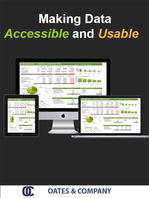Over the years, businesses have created and implemented numerous different inventory management techniques in an attempt to improve profit through decreased costs. Although each system works in a different way, the following principles are universal to inventory management. Along with a good enterprise resource planning (ERP) system, these 6 steps are the key to good inventory management.
Setting Up Stock Levels
You should always have an idea how much inventory you need to have on hand at any given time. You can do this with forecasting tools and analytics from a modern software system or by using your previous budgeting and accounting to show minimum and average inventory levels.
Preparing Inventory Budgets
 Budgets are one of the most important aspects of keeping your business growing while keeping costs down. Once your stock levels are set up, you have the tools to allocate each dollar before it is spent. This saves money by preventing the purchase of excess inventory.
Budgets are one of the most important aspects of keeping your business growing while keeping costs down. Once your stock levels are set up, you have the tools to allocate each dollar before it is spent. This saves money by preventing the purchase of excess inventory.
Maintaining a Perpetual Inventory System
Establishing controls, managing budgets, and creating forecasts are all easier to do with perpetual inventory systems. First in, first out (FIFO) and last in, first out (LIFO) are necessary in certain cases, but good software integrates with hardware – barcode scanners, weight scales, etc. – to create perpetual inventory management.
Establishing Purchase Procedures
Purchase procedures can cost businesses substantially. From overdraft fees caused by miscommunication to having the wrong inventory at the wrong time, your business management system must control your purchase procedures.
Calculating Inventory Turnover Ratios
An essential part of forecasting, budgeting, and perpetual inventory management, turnover ratios tell you what parts of your business are bringing in the most money and which areas need additional attention. Keeping ratios current and accessible through your management system empowers you to manage inventory well.
Categorizing Inventory
ABC analysis separates your inventory according to needed management controls. In a farm’s inventory, for example, some inventory is literally a pile of something – like corn or wheat – on the ground. This inventory has to have fairly loose management controls because there are too many variables to accurately create a perpetual management system. The piled inventory would, therefore, be classified as class "C" and managed via a LIFO system. The farm’s class B products would be baled items, like hay, which can be managed a little more precisely via a FIFO system. The most costly inventory (livestock, medications, equipment, etc.) would be class A and receive the strictest purchase and inventory management controls.
These 6 parts are important to having a good inventory management process and can be used no matter what kind of inventory management system you use.For more information, please contact Oates & Company today.



